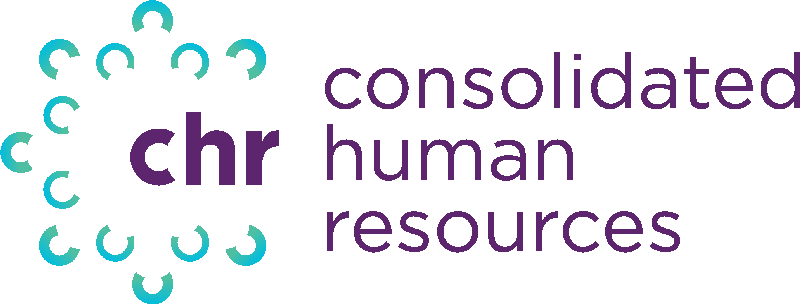An Inside Look at the Paycheck Protection Program
Click here to apply for a Payment Protection Program Loan
On March 27, 2020 Congress enacted “The Coronavirus Aid, Relief, and Economic Security Act” (CARES Act), which includes among many things, the “Paycheck Protection Program” (PPP) designed specifically for small businesses.
In short, the PPP provides low interest loans (1% loan that matures in 2 years) to qualified small businesses to help deal with the immediate economic impact of the COVID-19 pandemic. These loans are facilitated pursuant to Section 7(a) of the Small Business Act, and empowers SBA-certified bank lenders to issue such loans with relatively low restrictions, and offers generous forgiveness on the principal of such loans. Read on to learn more about the new PPP loans.
Eligibility Period
PPP loan applications can currently only be made now through June 30, 2020.
Business Concerns Eligible for PPP
The PPP is available to any small business concern that was in operation on February 15, 2020 and which employs 500 or less employees, sole proprietors, and independent contractors. This also includes 501(c)(3) nonprofits, 501(c)(19) veteran’s organizations and tribal businesses. Eligible small businesses also include sole-proprietors, independent contractors, or other self- employed individuals, such as “gig economy” workers. In regards to businesses in the accommodation and food services industry (NAICS 72), employee count is based on employees per physical location.
PPP Loan Amounts
Maximum loan amount is based upon the average monthly “payroll cost” incurred during the 1-year period before the loan date multiplied by 2.5, plus the outstanding balance of any pre-existing disaster recovery loans made since the pandemic outbreak, with a maximum limit of $10,000,000. “Payroll cost” is broadly defined in the Act to include:
- Salary, wage, commission, or similar compensation (up to $100k per any individual employee, sole proprietor or contractor income, prorated);
- Payment of cash tips or equivalent;
- Payment for vacation, parental, family, medical, or sick leave;
- Allowance for dismissal or separation;
- Group health care benefit premiums;
- Payment of any retirement benefit;
- Payment of State and local taxes assessed on employee compensation.
It excludes any compensation to employees who principally reside outside the U.S., and any Paid Sick Leave and Paid FMLA issued under the recently enacted Families First Coronavirus Response Act (FFCRA); you can learn more about the FFCRA here.
PPP Loan Qualification
Current section 7(a) affiliate banking lenders have delegated authority to make and approve loans and are only required to consider whether the borrower was in operation on February 15, 2020, and either had employees for whom salaries and payroll taxes were paid or paid independent contractors.
Applicants are required to make a good faith certification that they do not have another application pending for another PPP loan nor have they already received similar loans under PPP, and that the loan is necessary due to the uncertainty of current economic conditions. Applicant must also acknowledge that such loan funds will be used to retain workers and only to be used for:
- Payroll costs;
- Costs related to maintaining group healthcare benefits;
- Payments of interest on any mortgage obligation (excluding any prepayment of or payment of principal);
- Rent
- Utilities
- Interest on any other debt obligations incurred before February 15, 2020.
Applicants who have received an economic injury disaster loan during the period of January 31, 2020 through the date loans under the PPP become available and for a purpose other than paying permissible obligations under the PPP, may receive assistance under the PPP and have the option to refinance the economic injury disaster loan into a loan under the PPP.
Other PPP Particulars
The PPP provides for waiver of (i) SBA fees, (ii) the requirement that a small business concern is unable to obtain credit elsewhere, and (iii) personal guarantee and collateral requirements.
Additionally, interest rates are set at 1% and mature in 2 years, and you may defer any payment on these loans for 6 months. Borrowers may also pre-pay loan balances with no penalty.
PPP Loan Forgiveness
The most intriguing aspect of the PPP is the fact that borrowers are eligible to have the amount expended on “payroll costs” (see above list), interest payments on certain mortgage obligations, rent and utility payments incurred and paid during the 8-week period beginning on the origination date of the PPP loan. You read this right, two months of the above operating expenses are forgiven, making the PPP more of a business grant than a traditional SBA loan. The amount being forgiven cannot exceed the principal loan amount.
Forgiveness Qualifications
To qualify for PPP loan forgiveness, employers must retain their employees on payroll. The measuring period for comparison here is the average number of full-time equivalent employees (FTE) per month between February 15, 2019, and June 30, 2019, OR January 1, 2020, and ending on February 29, 2020; this is up the borrower to decide.
If a borrower’s submission of proof shows that they maintained the same (or more) full-time equivalent of employees, and paid each employee at least 75% of their full wages as compared to the measuring period, they qualify for full forgiveness of the expenses indicated above that were incurred over the 8-week period.
The amount of loan forgiveness is reduced in proportion to the drop in FTE headcount during the 8-week forgiveness period as compared to the borrower-elected measuring period indicated above. In recognition of the fact that many employers have or will likely be suffering economic hardship dating back to February 15, 2020, and running through April 26, 2020 (30 days after enactment of the CARES Act), and having to institute necessary layoffs or reduction in pay scenarios, the PPP provides for a period up to June 30, 2020, for borrowers to make necessary provisions to reinstate such affected workers back on the company payroll to at least 75% of their pay prior to the layoff to avoid or lessen any forgiveness reduction. Employees who received wages or salary at an annualized rate of pay in excess of $100,000 during any pay period in 2019 are excluded from this calculation.
The SBA shall in-turn purchase the amount of loan forgiveness from the affiliate certified lending institution, and such canceled loan amount will not result in taxable income to the borrower.
PPP Payment Deferral
Another extremely helpful aspect of the PPP is that any remaining principal amount left after forgiveness has been applied shall have such loan payments deferred for at least 6 months, and up to one full year. Consequently, such borrowers can potentially have a substantial amount forgiven in the first 8-weeks of their loan, avoid making any payments for up to a year, and can prepay any time with no penalty.
How To Apply
As indicated above, PPP loans are issued by SBA-certified lenders, which are in all 50 states, and may very well be the community bank located down the street. Here is a list of the 100 most active SBA 7(a) lenders in the country at this time. Such lenders simply need to verify that a qualified small business was in operation on February 15, 2020, and paid employee salaries and payroll taxes, or paid independent contractors to be eligible to take part in the PPP. It is designed under the CARES Act to be a relatively quick and simple process.
Click here to apply for a Payment Protection Program Loan.
Be advised that regulations shall be forthcoming no later than April 11, 2020, and further clarification shall be provided by CHR at that time. In the meantime, feel free to contact us with any questions, or visit our COVID-19 Workplace Resource site for more information.

